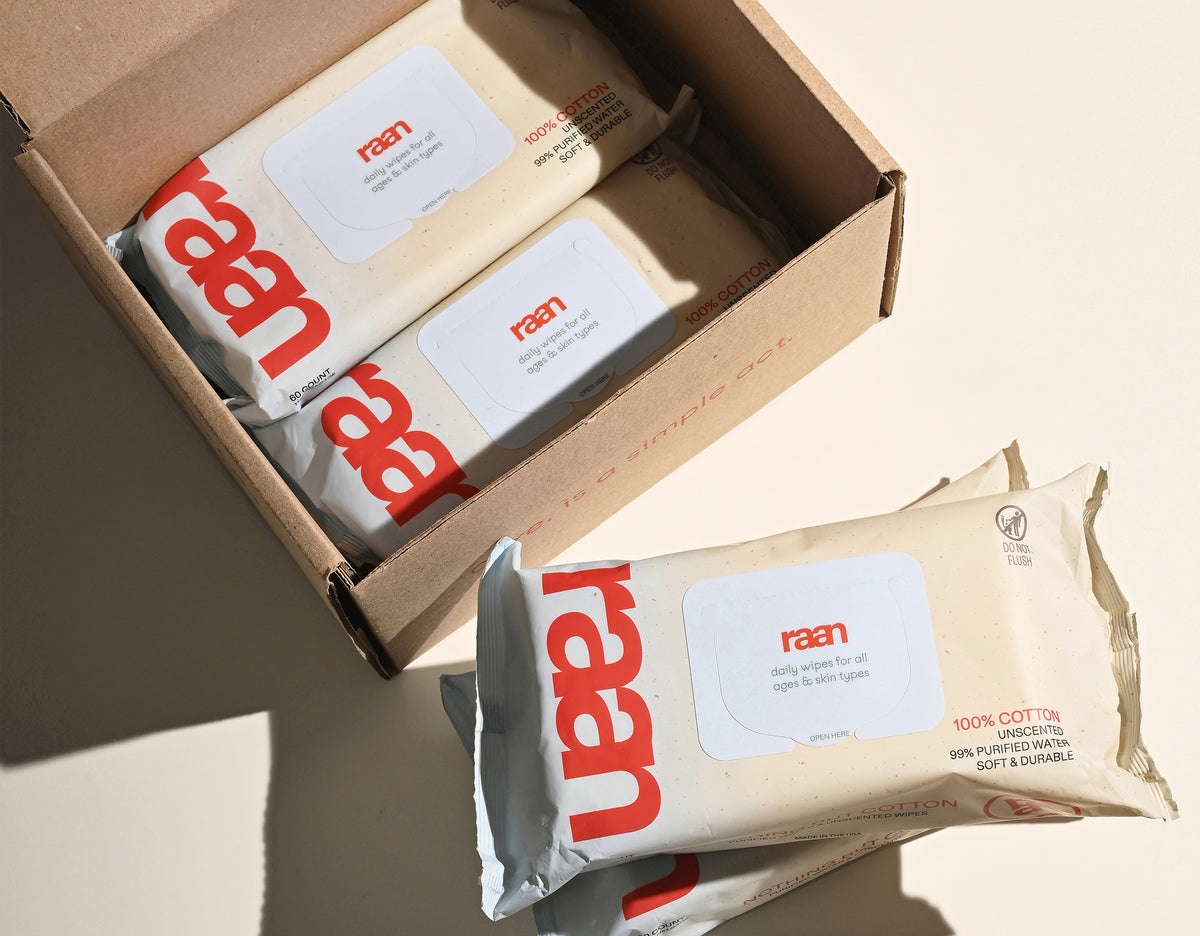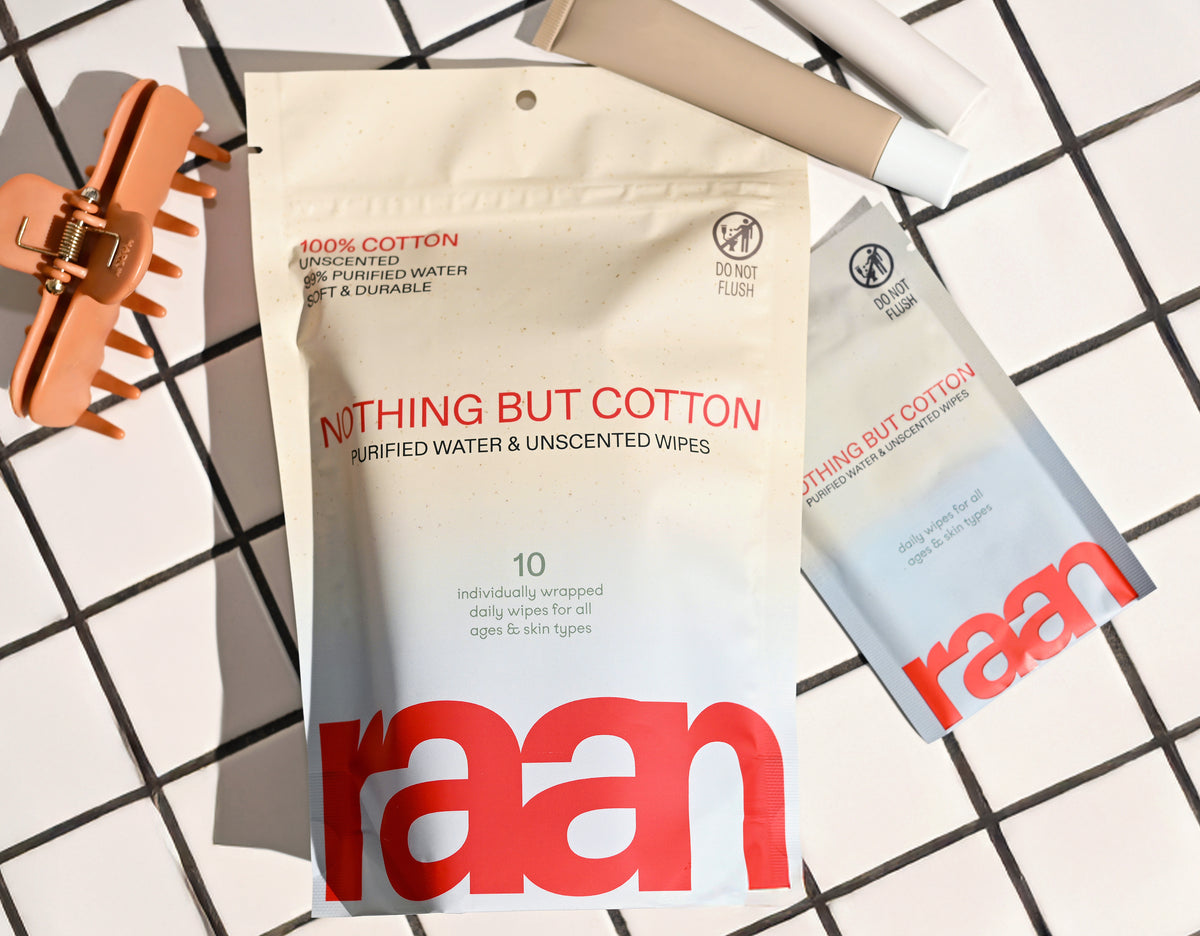Key Takeaways
- The diaper wipe aisle offers many options, which can be overwhelming for families.
- Many diaper wipes contain plastic fibers, synthetic fragrances, and long ingredient lists.
- Ideal diaper wipes should have simple, clean materials and clear ingredients.
- Diaper wipes need to be gentle on sensitive skin yet effective for tough messes.
Table of Contents
- What Are Diaper Wipes and Why Do They Matter?
- Anatomy of a Diaper Wipe: Materials, Ingredients, and Standards
- Choosing the Right Diaper Wipe for Your Family's Needs
- Everyday Use: How To Get the Most From Diaper Wipes (and Minimize Waste)
- Comparison Deep-Dive: Diaper Wipes Types, What Sets Each Apart
- Ingredient Integrity: Why Simpler Is Safer in Diaper Wipes
- Diaper Wipes for Sensitive Skin, Babies, and Beyond: Everyday Use Cases
- Sustainability in Action: Materials, Packaging, and Waste
- Functional Care, Honest Living: Why the Right Diaper Wipe Makes Life Simpler
Diaper Wipes Guide: Materials, Safety & Real Use
The diaper wipe aisle overwhelms with options, but most families end up with products packed with plastic fibers, synthetic fragrances, and ingredient lists longer than a grocery receipt. Real diaper wipes should be simple: clean materials, clear ingredients, and gentle enough for the most sensitive skin while tough enough for life's messiest moments. The Only Unbleached, 100% Cotton Baby Wipe for Sensitive Skin offers a straightforward solution for families seeking purity and safety from the start.
Whether you're changing your first diaper or your thousandth, the right wipe makes all the difference. We'll cut through the marketing noise to help you understand what actually matters in diaper wipes, from material science to ingredient transparency, so you can choose with confidence. For on-the-go convenience, Unbleached, 100% Cotton Pocket Wipe for Sensitive Skin is a smart addition to your diaper bag.
For a deeper dive into the top choices available, you can also explore this guide to the best diaper wipes for every family’s needs.
What Are Diaper Wipes and Why Do They Matter?
Diaper wipes are pre-moistened cloths designed for cleaning during diaper changes, but their usefulness extends far beyond the nursery. These versatile tools handle sticky fingers, messy faces, quick cleanups, and on-the-go spills for the entire family, from newborns to adults to pets.
The average household with a newborn uses approximately 350 wipes per week. That's roughly 18,000 wipes in the first year alone, making ingredient safety and material quality non-negotiable priorities. Every wipe touches skin directly, often multiple times per day, which means whatever's in that formula gets absorbed.
The problem isn't complexity itself, it's unnecessary complexity. Effective diaper wipes need water, gentle cleansing agents, safe preservation, and a soft material. Everything else is marketing.
Anatomy of a Diaper Wipe: Materials, Ingredients, and Standards

A diaper wipe consists of two components: the material (what you feel) and the formula (what does the cleaning). Most brands use synthetic fiber blends, essentially plastic, because it's cheaper to manufacture. The formula typically includes water, cleansing agents, preservatives, and often fragrances or "soothing" additives.
Raan takes a different approach: unbleached, 100% cotton material paired with 99% water and five EWG-verified ingredients. Each ingredient serves a specific function, organic aloe for moisture, food-grade preservatives for safety, citric acid for pH balance. No fragrances, no plastic, no mystery chemicals.
| Component | Conventional Wipes | Raan Cotton Wipes |
|---|---|---|
| Material | Synthetic fiber blend | Unbleached, 100% cotton |
| Water Content | 95-98% | 99% |
| Preservatives | Synthetic chemicals | Food-grade only |
| Fragrance | Often included | None |
Look for certifications that actually mean something: EWG Verified ensures ingredient safety, Natural Cotton Seal confirms material authenticity, and Cruelty Free guarantees ethical testing practices. These standards provide third-party validation beyond marketing claims.
Choosing the Right Diaper Wipe for Your Family's Needs
The right diaper wipe depends on who's using it and how. Newborns need the gentlest possible formula, their skin barrier isn't fully developed until around six months. Families with eczema or sensitive skin should prioritize fragrance-free, minimal-ingredient options. Multi-user households benefit from versatile wipes that work safely on everyone.
Start with a patch test for any new wipe: use it on a small area of skin and observe for 24-48 hours. Redness, irritation, or unusual dryness signals a reaction. For babies, test on the inner forearm first, never directly in the diaper area.
Consider your lifestyle too. Travel frequently? Look for resealable packaging that prevents drying. Need wipes for multiple purposes? Choose unscented options that won't leave residue on surfaces. Have pets? Ensure ingredients are safe if accidentally ingested during grooming.
The best diaper wipes grow with your family's changing needs while maintaining consistent safety and effectiveness. If you’re looking for a convenient way to try several options, check out the mess-ready pack for a variety of wipes suited to different situations.
Everyday Use: How To Get the Most From Diaper Wipes (and Minimize Waste)
Efficient diaper wipe use is about more than just grabbing a handful for every mess. Here’s how to make each wipe count while reducing waste:
- Fold and refold: Use both sides of each wipe by folding it over as you clean, maximizing surface area.
- Start with less: Begin with one wipe and only grab more if needed. Many messes require fewer wipes than you think.
- Seal after use: Always reseal the package to prevent wipes from drying out, which leads to unnecessary waste.
- Choose the right size: Larger wipes can handle bigger messes, reducing the total number used.
- Compost when possible: Cotton-based wipes can be composted if used on organic messes, helping to minimize landfill waste.
By being intentional with each wipe, you not only save money but also reduce your environmental footprint.
Comparison Deep-Dive: Diaper Wipes Types, What Sets Each Apart

The diaper wipes market divides into four main categories, each with distinct trade-offs in materials, safety, and environmental impact. Understanding these differences helps you choose wipes that align with your family's priorities and skin sensitivities.
| Wipe Type | Material Base | Water Content | Preservative System | Biodegradable | Best For |
|---|---|---|---|---|---|
| Conventional | Plastic-blend fibers | 95-98% | Synthetic preservatives | No | Budget-conscious families |
| Plant-based | Bamboo/wood pulp | 98% | Mixed systems | Partially | Eco-minded users |
| Water-based | Various substrates | 99%+ | Minimal preservatives | Varies | Sensitive skin |
| 100% Cotton (Raan) | Unbleached cotton | 99% | Food-grade only | Yes | All skin types, newborns |
Raan's approach eliminates common irritants while maintaining effectiveness. Our unbleached, 100% cotton material biodegrades completely, unlike plastic-blend alternatives that can take decades to break down. The EWG-verified formula uses only food-grade preservatives, the same ingredients that keep your food safe.
Material integrity matters most for frequent use. Synthetic fibers can harbor bacteria and feel rough against delicate skin, while our cotton fibers naturally resist microbial growth and maintain their soft texture throughout use. This translates to fewer skin reactions and better cleaning performance per wipe. For more on the benefits of cotton-based wipes, see our article on the best cotton wipes.
Ingredient Integrity: Why Simpler Is Safer in Diaper Wipes
Most diaper wipes contain 15-20 ingredients, creating unnecessary complexity and potential reaction triggers. Raan's six-ingredient formula proves that effective cleaning doesn't require chemical engineering, it requires thoughtful ingredient selection.
Our formula centers on 99% purified water and organic aloe for gentle moisturizing. Food-grade preservatives (sodium benzoate and potassium sorbate) prevent harmful bacterial growth using the same compounds that protect your favorite foods. Ethylhexylglycerin conditions skin naturally, while citric acid maintains optimal pH balance for skin health.
What's Missing Matters: No parabens, phenoxyethanol, synthetic fragrances, or plastic microfibers. Every excluded ingredient represents a potential irritant eliminated from your family's routine.
EWG Verified certification means every ingredient passes rigorous safety screening for developmental, reproductive, and allergenic concerns. This third-party validation removes guesswork from ingredient safety, you know exactly what touches your baby's skin and why it belongs there.
Diaper Wipes for Sensitive Skin, Babies, and Beyond: Everyday Use Cases
Newborn skin requires extra gentleness during the first few months when the protective barrier is still developing. Unbleached cotton wipes work safely from day one, providing effective cleaning without disrupting delicate skin pH or introducing harsh chemicals during this critical period. For families just starting out, the starter set is a convenient way to ensure you have the essentials on hand.
For eczema-prone family members, ingredient transparency becomes essential. Raan's simple formula eliminates common triggers like synthetic fragrances and harsh preservatives while maintaining the moisture balance that sensitive skin needs. The organic aloe component provides natural soothing properties without added complexity.
Real-world versatility extends beyond diaper changes. Use these wipes for sticky hands after snacks, quick face cleanups before photos, cleaning pet paws after walks, or wiping down surfaces on the go. Their gentle, minimalist formula makes them safe for all ages and skin types, including adults with sensitive skin and even pets who might lick their paws after a cleanup.
Sustainability in Action: Materials, Packaging, and Waste

The material story matters more than marketing claims. Conventional diaper wipes often contain plastic fibers that persist in landfills for decades, while cotton-based alternatives like Raan's biodegrade naturally when composted properly. For more on how long wipes last and their environmental impact, see our post on how long do wipes last.
Our packaging approach reduces environmental impact through three key changes: eliminating hard plastic lids saves 70% plastic compared to standard wipe containers, incorporating 35% post-consumer waste into pouches, and using 100% recyclable cardboard boxes that break down completely in standard recycling streams.
Disposal reality check: No wipe should ever be flushed, regardless of "flushable" claims. Even biodegradable materials can clog pipes and burden water treatment systems. Dispose of used wipes in regular trash, where cotton-based options will break down faster than synthetic alternatives in landfill conditions. For more on the environmental and health considerations of diaper and wipe materials, see this CDC resource on diaper and wipe materials.
| Material Type | Biodegradation Timeline | Microplastic Risk |
|---|---|---|
| 100% Cotton (Raan) | 6 months - 2 years | None |
| Cotton-Poly Blend | 5-10 years | Moderate |
| Synthetic Fibers | 20+ years | High |
Home composting works for cotton wipes used on organic messes, but check local guidelines first. Industrial composting facilities handle them more efficiently, breaking down both the cotton material and food-grade preservatives without harmful residues. For further reading on the environmental impact of baby wipes, refer to this peer-reviewed study on diaper and wipe sustainability.
Functional Care, Honest Living: Why the Right Diaper Wipe Makes Life Simpler
Real life is messy, unpredictable, and rarely Instagram-ready. The right diaper wipes don't promise perfection, they deliver reliable function when you need it most. Whether it's a middle-of-the-night diaper change or cleaning chocolate fingerprints off the car seat, you want products that work without drama or guesswork.
Raan exists because clean care shouldn't require a chemistry degree to understand. Six ingredients, each with a clear purpose, in unbleached cotton that feels like what it is, not engineered to feel like something else. No mystery preservatives, no synthetic fragrances masking other smells, no plastic fibers pretending to be soft.
This approach empowers you to make confident choices about what touches your family's skin hundreds of times each week. You know exactly what's in each wipe because we tell you exactly what's in each wipe. You can pronounce every ingredient because they're the same ones used in food preservation and skincare you already trust.
The peace of mind comes not from perfection, but from transparency. When your toddler grabs a wipe to "help" clean their sibling, or when you use one to quickly wipe your own hands before eating, you're not wondering about hidden additives or long-term exposure effects.
Everyday Clean, Real Peace of Mind: Choose diaper wipes that serve your actual life, the spilled juice, muddy shoes, and sticky fingers that make up real family moments. Simple ingredients, honest materials, and function that works when you need it most.
Frequently Asked Questions
What ingredients should I look for in diaper wipes to ensure they are safe for sensitive skin?
Look for diaper wipes with minimal, transparent ingredients like purified water, food-grade preservatives, organic aloe, and pH balancers. Avoid synthetic fragrances, harsh chemicals, and long ingredient lists to reduce irritation and support sensitive skin.
How do diaper wipe materials like synthetic fibers compare to natural options like 100% cotton in terms of safety and environmental impact?
Synthetic fibers often contain plastic microfibers that can irritate skin and contribute to environmental pollution. Natural materials like unbleached, 100% cotton are gentler on skin, biodegradable, and free from plastic, making them a safer and more sustainable choice.
Why is it important to choose diaper wipes with simple ingredient lists and no synthetic fragrances?
Simple ingredient lists reduce the risk of skin irritation and allergic reactions, especially for sensitive skin. Avoiding synthetic fragrances eliminates unnecessary chemicals that offer no functional benefit and can cause discomfort or sensitivity.
How can I minimize waste and environmental footprint when using diaper wipes daily?
Choose wipes made from biodegradable materials like unbleached cotton and packaging with reduced plastic and recycled content. Use wipes thoughtfully, grab only what you need, and consider products designed to reduce waste without sacrificing performance.






